Delaware is the country’s second-smallest state after Rhode Island. It is located between Pennsylvania and Maryland and shares the Delmarva Peninsula with both those states. Its coastlines include the Atlantic Ocean and the Delaware Bay. Most of the state is on a coastal plain at sea level. The southern border of the state shares the rolling hills and forests of Pennsylvania. There are large stretches of farmland, and the rest is mostly sandy beaches and coastlines. Delaware is known for its beautiful beaches.
Delaware’s weather is moderate most of the year. It has cool, breezy summers, and its winters are usually mild. The moderate temperature, regular rainfall, and frequent sunshine have created a state with many green, bucolic natural spaces that are perfect for all kinds of animals.
Wild Animals in Delaware
Delaware has forested areas and many rivers, streams, and coastal areas. Common animals in these habitats include white-tail deer, foxes, muskrats, minks, otters, and chipmunks.
Delaware’s rodents include woodchucks, squirrels, and several mice species. Its biggest predators are foxes, bobcats, and wolves. Coyotes have been seen in Delaware, but their numbers are small.
Delaware has many bat species, including rare bats like the hoary bat and silver-haired bat. Porcupines, raccoons, opossums, and rodents round out the common animals. The state does not have any mammals that are particularly strange or exotic.
Delaware has many marine animals and shorebirds, including some of the rarest and most endangered coastal birds in the country. It has 21 snake species, including water snakes, and 10 native turtle species. Delaware has hundreds of bird species that include herons, warblers, songbirds, ducks, and egrets.
The Official Animal of Delaware
Delaware has four official state animals.
The official state animal is the blue hen. This beautiful, unusual chicken is not an official chicken breed. It gets its name from its brilliant blue feathers. Blue hens are native to Delaware and are bred for their coloring. A chicken might seem a strange choice for a state animal, but the bird’s symbolic importance to Delaware goes back to the Revolutionary War. Delaware chose this hen as its official symbol in 1939.
The bird lends its name to the University of Delaware sports teams, who call themselves the “Fighting Blue Hens.” Quarterback Joe Flacco was a Fighting Blue Hen before he signed an NFL contract with the Baltimore Ravens.
The state marine animal is the horseshoe crab. This strange shoreline creature is not actually a crab. It’s a member of the family Limulidae.
The state insect is the ladybug, and the state mammal is the gray fox.
Where To Find the Top Wild Animals in Delaware
Although it is a small state, Delaware has a high population density. Industrialization, agriculture, and development have destroyed most of Delaware’s wetlands. Today, only 25% of its original wetlands remain. These are mostly swamps, freshwater tidal marshes, salt marshes, estuaries, and non-tidal wetlands. They are home to many important species, and the state has taken steps to preserve its remaining wetlands ecosystems.
Delaware has 34 state nature preserves. Some are not open to the public to avoid disturbing important breeding sites. It also has 19 public wildlife areas that protect more than 62,000 acres of land.
- Lums Pond State Park is a nature preserve that surrounds the state’s biggest freshwater pond. You can see river turtles, ospreys and blue herons on the pond shoreline.
- Tulip Tree Woods Nature Preserve is an old growth forest where you can spot many of Delaware’s wild animals.
- The Great Marsh Preserve in Rehoboth, Delaware, is a 17,000-acre preserve that protects some of Delaware’s remaining wetlands. It is a network of beaches, marshes and wildlife refuges. It is a wonderful place to see marine life and spot some of the country’s rarest endangered shorebirds.
- Wild Lands Milford Neck Preserve includes three miles of Delaware Bay coastline and 3,500 acres of protected beach, tidal marsh and upland forest. It is a wonderful place to see raptors, migrating waterfowl, horseshoe crabs and the state’s rarest native plants.
- Prime Hook National Wildlife Refuge is on the western shore of the Delaware Bay. It is an important refuge for migrating and wintering waterfowl. Established in 1963, it is considered one of the best protected wetlands areas on the Atlantic coast. Its grasslands, woodlands and ponds provide habitat for more than 260 bird species, 35 reptiles and amphibians, and 36 species of mammals.
The Most Dangerous Animals in Delaware Today
Delaware does not have many animals that are dangerous to humans. White-tail deer can be dangerous by causing traffic accidents when they wander onto the roads.
Besides deer, these are the most dangerous animals you’re likely to find.
- Timber rattlesnake: These long, highly venomous vipers hide in the leaves on the forest floor. If you are hiking or visiting a wildlife preserve, wear boots that protect your feet and stay on the trails.
- Ticks: Like any state with forested areas, Delaware has a lot of deer ticks. When you’re in the outdoors, wear tick and mosquito repellent. Check yourself for ticks when you get home.
Endangered Animals in Delaware
There are several species in danger of going extinct in Delaware.
Endangered birds include:
- American kestrel (Falco sparverius)
- Short-eared owl (Asio flammeus)
- Swainson’s warbler (Limnothlypis swainsonii)
- Piping plover (Charadrius melodus)
- Cerulean warbler (Setophaga cerulea)
Endangered mammals include:
- Little brown bat (Myotis lucifugus)
- Delmarva fox squirrel (Sciurus niger cinereus)
- Sei whale (Balaenoptera borealis)
- Humpback whale (Megaptera novaengliae)
- Northern long-eared bat (Myotis septentrionalis)
Endangered reptiles and amphibians include:
- Mud salamander (Pseudotriton montanus)
- Kemp’s Ridley sea turtle (Lepidochelys kempii)
- Loggerhead sea turtle (Caretta caretta)
- Barking tree frog (Hyla gratiosa)
- Red corn snake (Pantherophis guttatus)
Endangered insects include:
- Dark stoneroot borer moth (Papaipema duplicatus)
- Treetop emerald (Somatochlora provocans)
- Elfin skimmer (Nannothemis bella)
- Maritime sunflower borer moth (Papaipema maritima)
- Marbled underwing (Catocala marmorata)
The state’s Division of Fish and Wildlife has created a Wildlife Action Plan to preserve Delaware’s abundant fish, wildlife, and natural habitats.
Birds and Beaches
This small state has a large variety of animal life. With its beaches and protected coastal areas, Delaware is a wonderful place to see rare shorebirds, migratory fowl, and other wildlife. You can find sharks near Delawares’ coasts and beaches.
Native Plants in Delaware
Due to its dedication to the study of plants and chemicals, Delaware is often regarded as the chemical capital of the world. And with around 140 distinct vegetation communities in Delaware alone, plants such as the broadleaf arrowhead and the New Jersey tea plant are all indigenous to the state.
The Flag of Delaware
The flag of Delaware was officially adopted in 1913 and features a blue background as well as a buff-colored diamond with the coat of arms at its center. The coat of arms represents the state’s history while at the same time paying tribute to its agricultural resources as depicted by images of a farmer, ox, corn and wheat. Above the ox is a blue stripe which symbolizes the Delaware river, one of the state’s original transportation routes. Across the bottom of the flag is the date December 7, 1787 which is the date that Delaware became the very first US state.
More Articles Related to Delaware
Read about:
- extinct animals that lived in Delaware.
- copperheads in Delaware.
- the best fish to catch in Delaware in the summer.
- Deer Season In Delaware: Everything You Need To Know To Be Prepared
Delawarean Animals

Admiral Butterfly
Stunningly beautiful wings
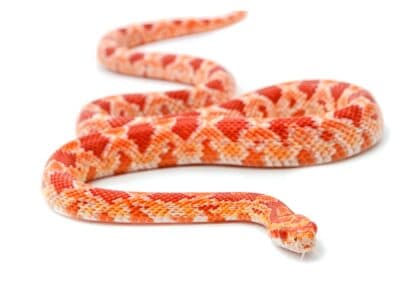
Albino (Amelanistic) Corn Snake
Albino corn snakes make great beginner snakes.
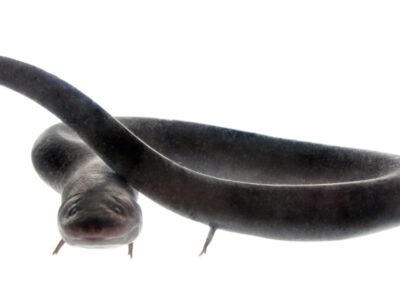
American Eel
Don't eat raw eel! Their blood is poisonous to humans when consumed raw.

Armyworm
They are so named because they "march" in armies of worms from one crop to another in search of food
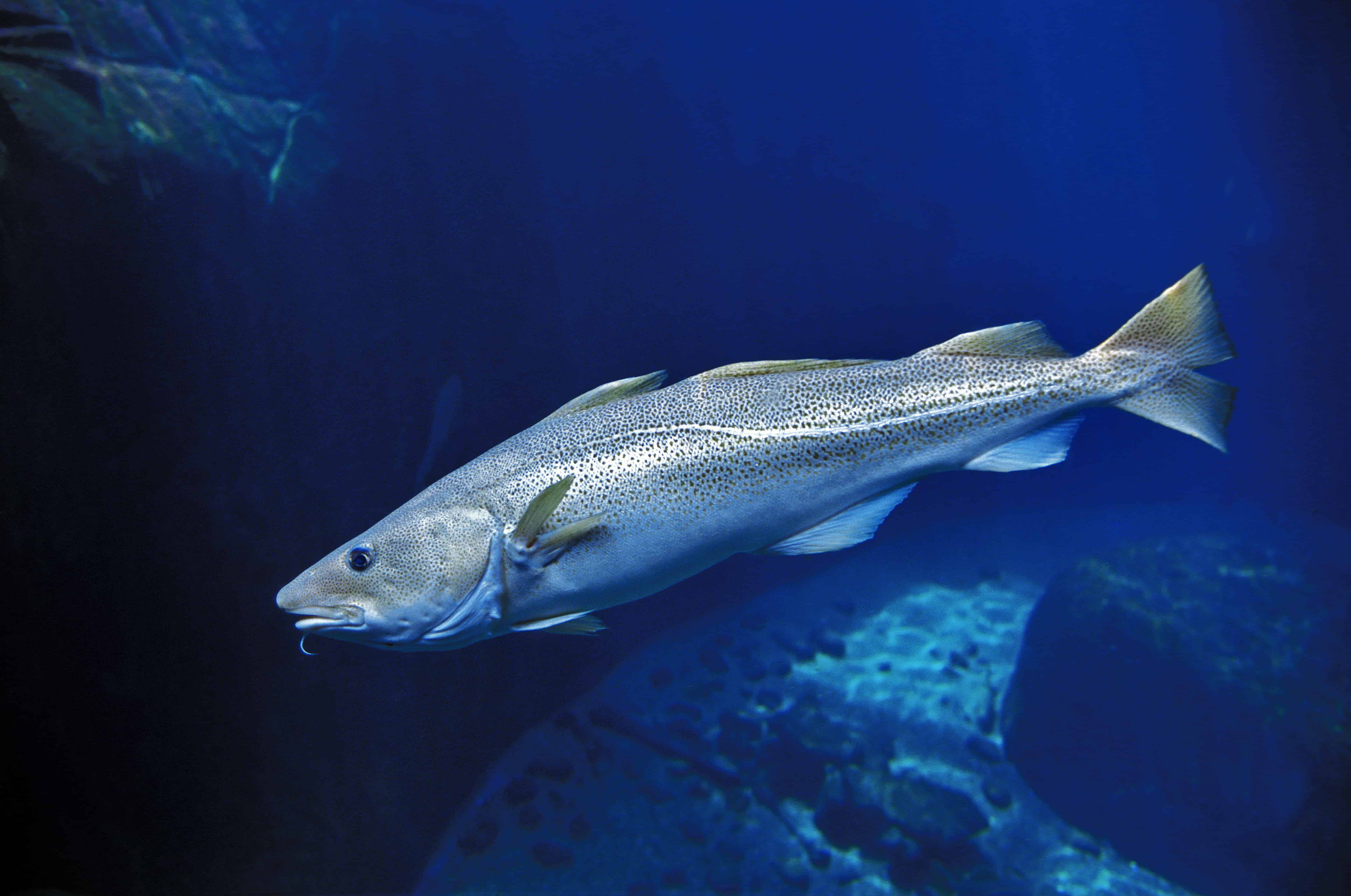
Atlantic Cod
One of the most popular food fishes in the world
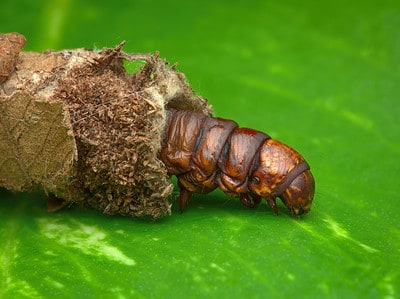
Bagworm Moth Caterpillar
They continually enlarge their protective cases

Beewolf wasp
They hunt bees
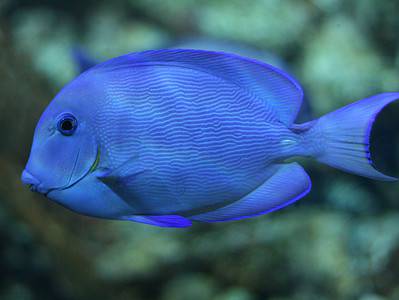
Blue Tang
One of the most colorful members of the genus Acanthurus

Clearnose Skate
The skate with translucent nose patches

Common Yellowthroat
The Common Yellowthroat stays close to the ground and uses stealth to survive!
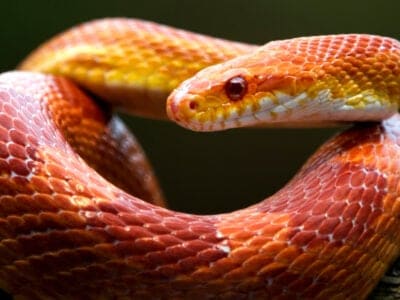
Corn Snake
Corn snakes are partly arboreal and are excellent climbers.
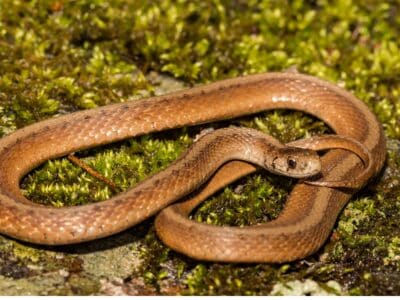
De Kay’s Brown Snake
They have specialized jaws for removing snails from shells.

Eastern Chipmunk
The name chipmunk is derived from an Ojibwe word that means “one who descends the trees headfirst.”
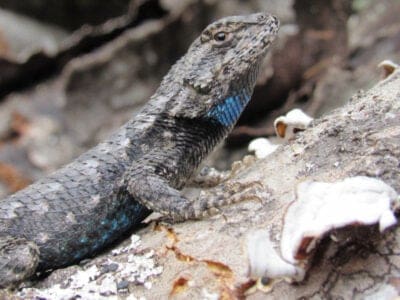
Eastern Fence Lizard
Females are usually larger than males.

Eastern Hognose Snake
Eastern hognose snakes are venomous, but only to frogs and toads.

Flea
Adult fleas can jump up to 7 inches in the air
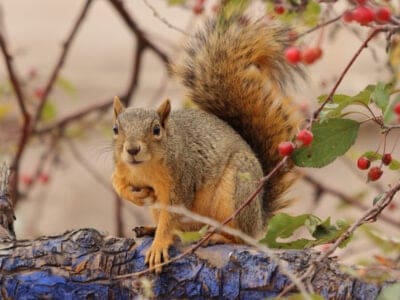
Fox Squirrel
Although it is a tree squirrel, it spends most of its time on the ground.

Groundhog (Woodchuck)
They whistle to each other to warn of approaching danger!

Jack Crevalle
One of the biggest species in the Caranx genus

Jackrabbit
They can run as fast as 45 mph.

Mealybug
They have a symbiotic relationship with ants.

Mockingbird
Mockingbirds are incredible mimics that can learn hundreds of songs!
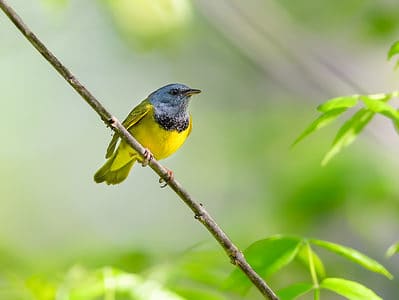
Mourning Warbler
The Mourning Warbler was named for its gray head, which resembles a mourning veil!

Nematode
Nematodes range in size from 1/10 of an inch to 28 feet long

Northern Water Snake
Northern watersnakes’ teeth help them nab fish as they swim by.

Orb Weaver
Females are about four times the size of males

Owl
The owl can rotate its head some 270 degrees
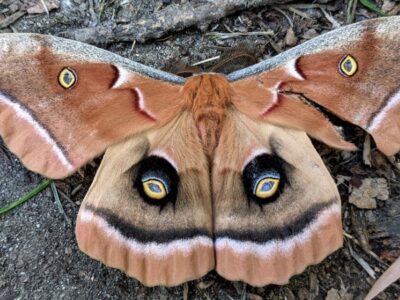
Polyphemus Moth
The Polyphemus moth doesn’t and can't eat, except when it's a caterpillar!

Pompano Fish
They are bottom-feeders
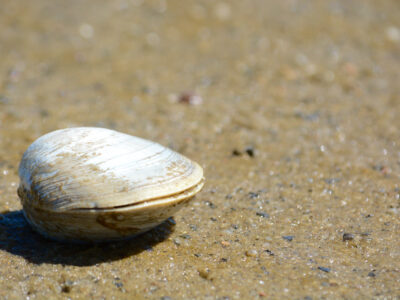
Quahog Clam
Their hinged shell protects their soft body
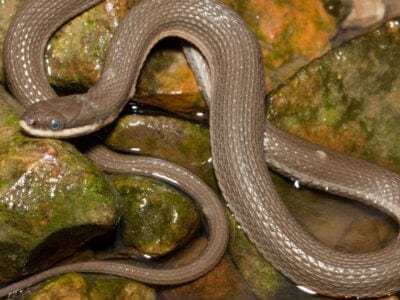
Queen Snake
Queen snakes have armor-like scales on the top of their head

Rat Snakes
Rat snakes are constrictors from the Colubridae family of snakes.
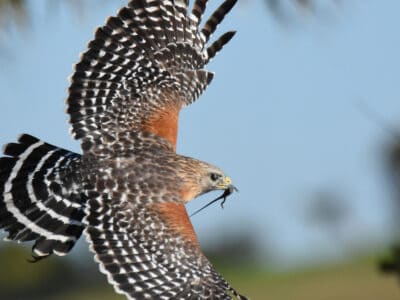
Red-Shouldered Hawk
Red-Shouldered Hawks reuse the same nesting area each year.

Rooster
Will mate with the entire flock!
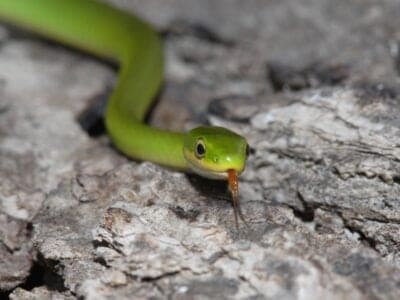
Rough Green Snake
Rough green snakes are great pet snakes because they're low-maintenance.
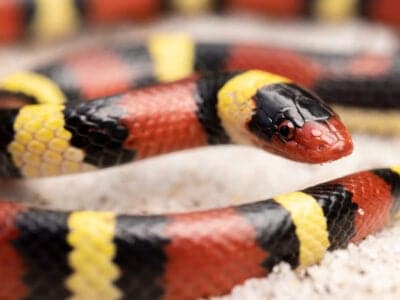
Scarlet Kingsnake
Scarlet kingsnake’s pattern is an example of Batesian mimicry.
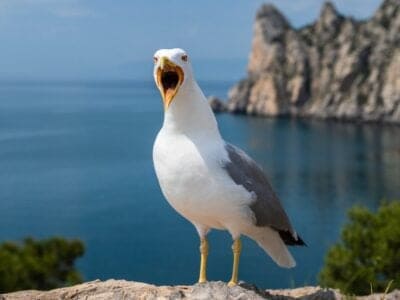
Seagull
Some gulls are capable of using tools

Smallmouth Bass
A fierce fighter!

Smokybrown Cockroach
Has up to 45 eggs per egg case
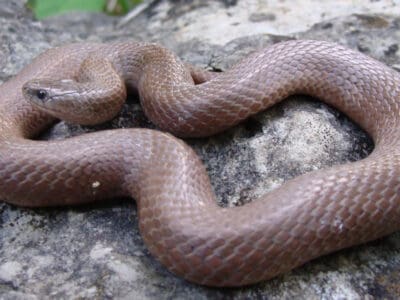
Smooth Earth Snake
Valeria Biddle Blaney (1828-1900) collected the first specimen in Maryland.
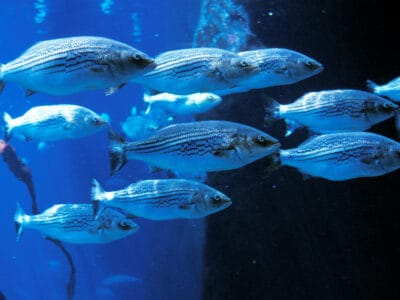
Striped Bass
Pilgrims counted striped bass as an essential part of their diet from the time they arrived in North America.

Tree Cricket
They make music with their wings
Delawarean Animals List
- Admiral Butterfly
- Albino (Amelanistic) Corn Snake
- American Eel
- Armyworm
- Atlantic Cod
- Bagworm Moth Caterpillar
- Beewolf wasp
- Blue Tang
- Clearnose Skate
- Common Yellowthroat
- Corn Snake
- De Kay’s Brown Snake
- Eastern Chipmunk
- Eastern Fence Lizard
- Eastern Hognose Snake
- Flea
- Fox Squirrel
- Groundhog (Woodchuck)
- Jack Crevalle
- Jackrabbit
- Mealybug
- Milk Snake
- Mockingbird
- Mourning Warbler
- Nematode
- Northern Water Snake
- Orb Weaver
- Owl
- Polyphemus Moth
- Pompano Fish
- Quahog Clam
- Queen Snake
- Rat Snakes
- Red-Shouldered Hawk
- Rooster
- Rough Green Snake
- Scarlet Kingsnake
- Seagull
- Smallmouth Bass
- Smokybrown Cockroach
- Smooth Earth Snake
- Striped Bass
- Swallowtail Butterfly
- Tree Cricket
- Yellowish Cuckoo Bumblebee (formerly Fernald’s Cuckoo Bumblebee)
Animals in Delaware FAQs (Frequently Asked Questions)
What animals live in Delaware?
Delaware’s coastal location means it has many animals that live in or near the water. These include shorebirds, mallards, geese, river otters and box turtles. Its shorelines are breeding and feeding grounds for many of the rarest turtles and migratory birds.
Delaware’s biggest animals are its marine animals, which include whales, porpoises and dolphins. Ocean predators like killer whales and sharks swim in its waters.
It also has forested areas where you will see common animals like foxes, wolves, white-tail deer, rodents, and opossums.
Are there coyotes in Delaware?
Delaware has a small but stable population of coyotes.
What is Delaware’s state mammal?
Delaware’s state mammal is the gray fox. Gray foxes are shy and secretive, but they are fierce predators and skillful tree climbers.
Are there badgers in Delaware?
No, there are no badgers in Delaware. Badgers mostly live in the central states, southwestern states, and the Great Lakes region.
What's the largest largemouth bass ever caught in Delware?
It might surprise you to learn that largemouth bass aren’t native to Delaware! Nonetheless, they have been introduced. The largest largemouth bass ever caught in the state was an 11.1-pound fish caught in 2016.







